The FV721 Fox Combat Vehicle Reconnaissance (Wheeled) abbreviated as CVR(W)) was a 4×4 armoured car manufactured by ROF Leeds. It was dsigned for the British Army replacement of the 1950 Daimler Ferret (1951) scout car, itself a replacement for the legendary WW2 Daimler Dingo but also the ageing Saladin armoured car (1956). The Fox saw service first with B Squadron, 1st Royal Tank Regiment at Tidworth from 1975 onwards, until retired from service in 1993–94. Some 325 were made by Royal Ordnance Leeds, including 200 for the British Army and the remainder for export. It had received no true replacement in a wheeled form yet.
Then the first official announcement about the new vehicle, soon named "Fox" to keep the animal tradition, was made in October 1969. The last modifications made on the vehicle ended in 1970 with an official acceptance into service with the British Army. A production order was placed at Royal Ordnance Leeds and it really started the next year from early 1972, with the first Fox completed in May 1973. Production at Royal Ordnance Leeds went on until 1980. For memory, ROF Leeds first opened as a state owned munitions factory in December 1915 and ROF in January 1936, created before the Second World War.
It was converted into an Engineering ROF to replace all sorts of obsolete systems. By November 1945 it produced the up-armoured Centurion Mark II, 800 being ordered, also creating production lines at Leyland and ensuring the remainder between its facilities at Leeds and Woolwich, as well as Vickers, Elswick. The Chieftain Tank was built also partly at ROF Leeds and the engineers managed to master reinforce aluminium castings enough to create the Fox but also the FV180 Combat Engineer Tractor. By 1986, ROF Leeds was acquired by Vickers and privatized. It was closed off in 2004.
The driver sat centrally at the front with integral periscope/hatch cover, lifting, opened to the right. The preipheric vision was restricted. When not in combat, the whole hatch was lifted up for the driver so see unempeded. The turret housed the commander on the left, and gunner on the right, knowing that the commander was also the loader. Each had a rear-opening hatch cover over the roof. Also on the roof were a set of periscopic sights, mostly grouped around the left side commander's position, three on either side covering various angles, one at the rear just below the hatch hinge. He also had a rotating sights in front of the roof for a full 360° surveillance with 10x magnification but no IR channel. The driver had two periscopes for both fwd angles and amain fixes sight with 10x magnification, no IR channel either, but the commander could activate standared infrared/white light headlamp and had a spotlight for night operations.
The turret had three lifting eyes, two on either sides forward and one on the upper back plate. On both sides of the turret rear were also wleded two support for the main radio whip antenna. They were telecopic and in manoeuvers were used to strap signals.
The large all welded turret was both low and flat, with two arched sides sloped top down by the middle, and a flat section nose, also in Vee. The back was als in aless pronounced Vee. It was closed by a pannier to recuperate spent rounds. It was still roomy enough for two, the gunner and commander, plus the 30 mm main gun in between them, which packed infintely more punch than anything that came before. The same rarden 30 mm was also used in aviation and sported by tracked vehicles such as the FV 107 Scimitar derived from the Scorpion.
In 1994, the latter had a swap of turret, receiving the lighter one from now retired FV 721, creating the Sabre CVR(T), 325 being manufactured by BAE land systems. But it was unsuccessful, removed from service in 2004 and never got a proper replacement. The Fox also had plenty of storage despite its small size: Two storage bins on either side of the fighting compartment over the main flat mudguard/walkway, and two in between the roadwheels with a large hatch, also to access some maintenance bits. Other equipments included infrared/white light headlamps as well as the commander's spotlight, a drinking-water tank, and the electric distribution box hiwh had a cooking vessel socket (tea time oblige) plus an inter-vehicle starting socket to feed it. In option it had a navigation aids as well as powered traverse and the ZB 298 surveillance radar (left side).
The vehicles had sets of regulation roads items: A set of forward lights, two main road lights with down tilt for low visibility night driving, and two sets of fog and direction lights protected under a hood on either side. The usual back mirrors were atop two articulated arms that can be folded inwards to reduce width, and there were also a main bumber, no trim vane, upper glacis storage to the left for a standard fire-extinguising bottle and on the right ammo boxes. The lower nose place nad to more towing eyese, but there was not self-unditiching towing cable. There were extra boxes welded under the forward lower turret plate. The flat back hull plate had three utility tail lights.
Without preparation, the Fox could ford 3.3 feet or one meter of water but after raising its flotation screen in two minutes it could float, driven and steerd by its road wheels, so performances were not brillant whens swimming at 3.2 mph (5.23 km/h). The screens, a WW2 funnies inheritance were removed in the 1980s. The Fox was light enough to be Air portable as well as as much as three could be parked inside a C-130 Hercules aircraft, and two placed on racks to be paradropped. It could also negociate a 58% slope, climb a vertical obstacle 1.6 ft (0.5 m) tall and gap a 4 ft (1.22 m) trench with channels.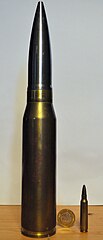 The Low profile turret's centerpiece was its 30 mm L21 RARDEN cannon, manually fed by three-round clips. In all, 99 rounds were carried in about 33 clips. The coaxial L37A2 7.62 mm machine gun was mounted alongside, and supplied by 2,600 rounds, including tracers. None were stabilised.
The 30 mm L21 Rarden was designed from 1966, in service in 1970. Weighting 113 kg for 3,150 mm (10 ft 4 in) long the barrel alone being 2,430 mm (96 in) it fired a 30x170 mm KCB unitary cartridge at 90 rds/min. Each round had a muzzle velocity of 1,070 m/s (3,500 ft/s) for the HE or 1,175 m/s for the Armour Piercing Discarding Sabot (APDS shell). The latter had good anti-tank capabilities for any vehicle armoured by up to 50 mm sloped armour. Max range was however only of 2,000 metres (2,200 yd). This gun could also fire the Armour Piercing Secondary Effect (APSE) and the High Explosive Incendiary (HEI). It equipped at the time also the Scimitar, Scorpion and Warrior IFV.
The Low profile turret's centerpiece was its 30 mm L21 RARDEN cannon, manually fed by three-round clips. In all, 99 rounds were carried in about 33 clips. The coaxial L37A2 7.62 mm machine gun was mounted alongside, and supplied by 2,600 rounds, including tracers. None were stabilised.
The 30 mm L21 Rarden was designed from 1966, in service in 1970. Weighting 113 kg for 3,150 mm (10 ft 4 in) long the barrel alone being 2,430 mm (96 in) it fired a 30x170 mm KCB unitary cartridge at 90 rds/min. Each round had a muzzle velocity of 1,070 m/s (3,500 ft/s) for the HE or 1,175 m/s for the Armour Piercing Discarding Sabot (APDS shell). The latter had good anti-tank capabilities for any vehicle armoured by up to 50 mm sloped armour. Max range was however only of 2,000 metres (2,200 yd). This gun could also fire the Armour Piercing Secondary Effect (APSE) and the High Explosive Incendiary (HEI). It equipped at the time also the Scimitar, Scorpion and Warrior IFV.
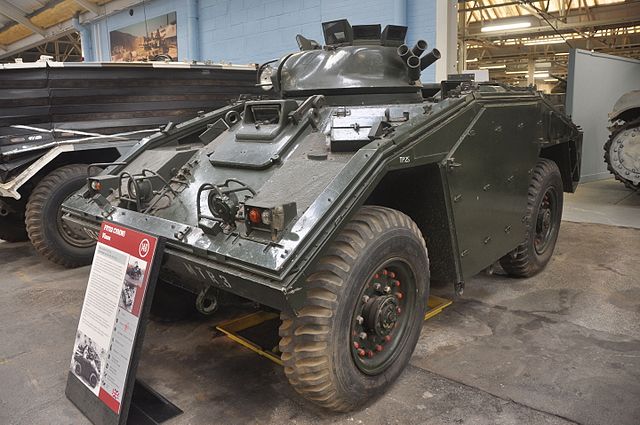
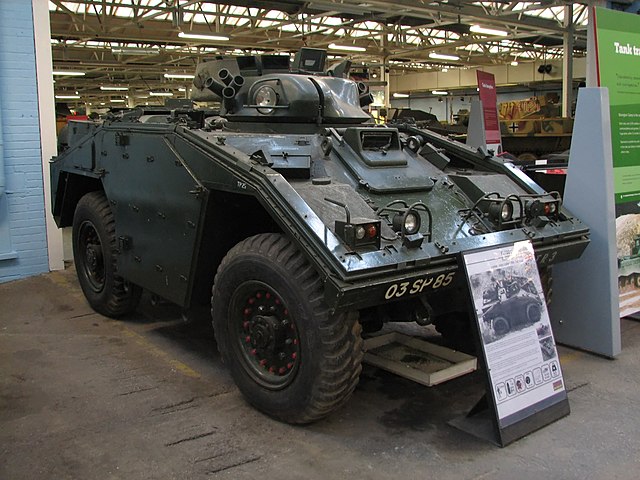
FV 722 Vixen at Bovington
This version was planned and tested, never entered production, now held at the Bovington museum. The second spent 20 years mounted on a plinth as gate guard at the Military Vehicles and Engineering Establishment in Chertsey was recovered and now restored in Australia. It had instead a MG-armed cast turret as a lower profile vehicle.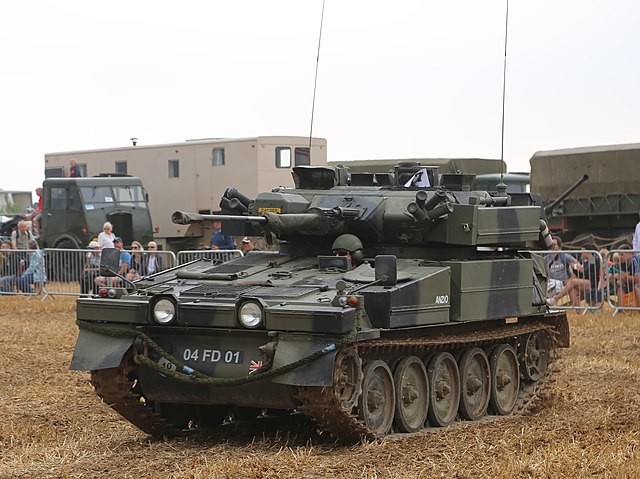
Only production variant: The turret was mated on the chassis of an FV101 Scorpion hull, created a rejuvenated tracked reconnaissance vehicle from older chassis, called the Sabre. Cheaper than the FV107 Scimitar, 136 were delivered, and they had new smoke grenade dischargers, the L94A1 chain gun, domed hatches for extra headroom in the turret. They served with reconnaissance platoons of armoured/mechanised infantry battalions and left service in 2004 without replacement.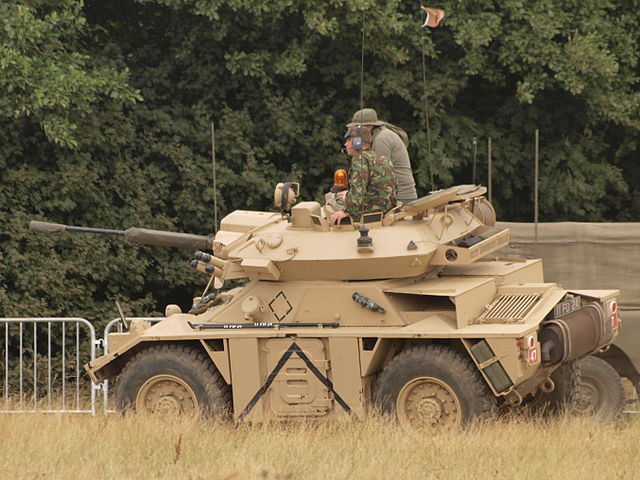
CVR F721 allegedly deployed in the Gulf War. It seems to be a fantasy livery as the only "Fox" listed in Desert Storm was the US-operated M93 Fox NBC Reconnaissance System. However the Daimler Ferret was.
UK obtained about 200, but 180 operated depending on sources. The fox would was primarily used by the Royal Yeomanry and the Queen’s Own Yeomanry, in rear formations of the BAOR. A few were also attached to airmobile units and mechanized infantry battalions featuring recce patrols. The fox would serve in the Gulf War as its last deployment and withdrawn between 1993 and 1995.
Only exports were the following:
 Malawi: 70 vehicles, perhaps 20 extant today.
Malawi: 70 vehicles, perhaps 20 extant today.
 Iran: 20 vehicles allegedly (army-guide).
Iran: 20 vehicles allegedly (army-guide).
 Nigeria: 55 delivered. Still in service.
Nigeria: 55 delivered. Still in service.
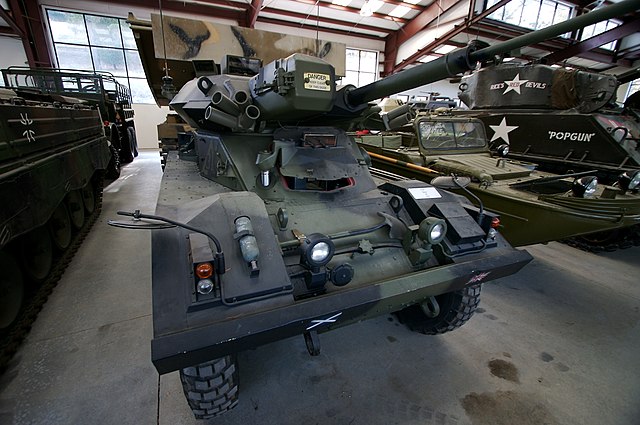
Fox at Bovington
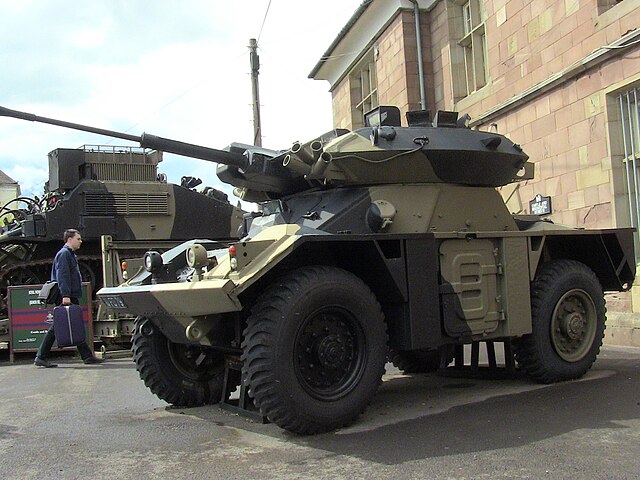
Fox at Monmouth Museum
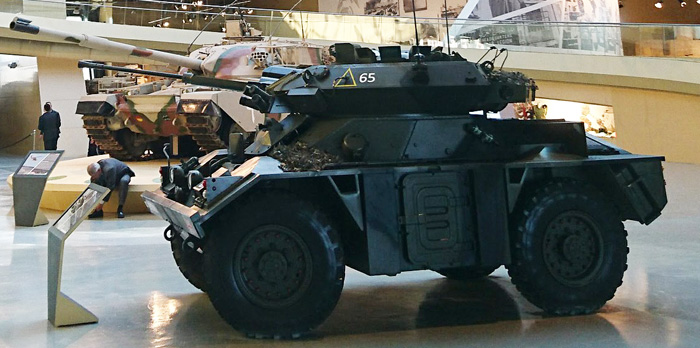
Fox at the Royal Tank Museum, Jordan
Taschenbuch der Panzer Edition 7 (1990), Bernard & Graefe Verlag
Terry Gander, The Modern British Army (1988), Patrick Stephens Limited
Terry Gander, Britain's Modern Army (1995), Patrick Stephens Limited
forecastinternational.com
military-vehicle.net/
inetres.com
weaponsystems.net
army-guide.com
publications.parliament.uk/
3D and detailed design
norfolktankmuseum.co.uk
khakicorpsimports.com
Development History
Development of the Fox started already in 1965, to replace the ageing Ferret. Daimler from Coventry already reponsible for manufacturing the Ferret scout car was awarded a contract to build 15 prototypes under the program FV721 of a new and better armed, modernized variant. The first was completed in November 1967. The last was ready by April 1969 and so trials commenced in 1968. The vehicle was renamed by the army CVR(W) for "Combat Vehicle, Reconnaissance (Wheeled)".Then the first official announcement about the new vehicle, soon named "Fox" to keep the animal tradition, was made in October 1969. The last modifications made on the vehicle ended in 1970 with an official acceptance into service with the British Army. A production order was placed at Royal Ordnance Leeds and it really started the next year from early 1972, with the first Fox completed in May 1973. Production at Royal Ordnance Leeds went on until 1980. For memory, ROF Leeds first opened as a state owned munitions factory in December 1915 and ROF in January 1936, created before the Second World War.
It was converted into an Engineering ROF to replace all sorts of obsolete systems. By November 1945 it produced the up-armoured Centurion Mark II, 800 being ordered, also creating production lines at Leyland and ensuring the remainder between its facilities at Leeds and Woolwich, as well as Vickers, Elswick. The Chieftain Tank was built also partly at ROF Leeds and the engineers managed to master reinforce aluminium castings enough to create the Fox but also the FV180 Combat Engineer Tractor. By 1986, ROF Leeds was acquired by Vickers and privatized. It was closed off in 2004.
Design
General Layout
The roots of the FV 721 Fox are clearly based on later versions of the FV 701 Ferret such as the big wheeled Mark 3/4/5 which had improved mobility. It had about the same size and compactness, the hull was shaped the same, with a central post with inwards facing sides and sloped gace, single seat superstructure for the driver. The major difference was the cast turret built above, taking as a base, the ring mount of the FV 712 Ferret Mark 5 Swingfire which featured a two-launcher turrets with ATGMs. This was the ultimate version of the vehicle, in 1970. It was designed to operate alongside the Fox if needed, and both shared a lot of components.The driver sat centrally at the front with integral periscope/hatch cover, lifting, opened to the right. The preipheric vision was restricted. When not in combat, the whole hatch was lifted up for the driver so see unempeded. The turret housed the commander on the left, and gunner on the right, knowing that the commander was also the loader. Each had a rear-opening hatch cover over the roof. Also on the roof were a set of periscopic sights, mostly grouped around the left side commander's position, three on either side covering various angles, one at the rear just below the hatch hinge. He also had a rotating sights in front of the roof for a full 360° surveillance with 10x magnification but no IR channel. The driver had two periscopes for both fwd angles and amain fixes sight with 10x magnification, no IR channel either, but the commander could activate standared infrared/white light headlamp and had a spotlight for night operations.
The turret had three lifting eyes, two on either sides forward and one on the upper back plate. On both sides of the turret rear were also wleded two support for the main radio whip antenna. They were telecopic and in manoeuvers were used to strap signals.
The large all welded turret was both low and flat, with two arched sides sloped top down by the middle, and a flat section nose, also in Vee. The back was als in aless pronounced Vee. It was closed by a pannier to recuperate spent rounds. It was still roomy enough for two, the gunner and commander, plus the 30 mm main gun in between them, which packed infintely more punch than anything that came before. The same rarden 30 mm was also used in aviation and sported by tracked vehicles such as the FV 107 Scimitar derived from the Scorpion.
In 1994, the latter had a swap of turret, receiving the lighter one from now retired FV 721, creating the Sabre CVR(T), 325 being manufactured by BAE land systems. But it was unsuccessful, removed from service in 2004 and never got a proper replacement. The Fox also had plenty of storage despite its small size: Two storage bins on either side of the fighting compartment over the main flat mudguard/walkway, and two in between the roadwheels with a large hatch, also to access some maintenance bits. Other equipments included infrared/white light headlamps as well as the commander's spotlight, a drinking-water tank, and the electric distribution box hiwh had a cooking vessel socket (tea time oblige) plus an inter-vehicle starting socket to feed it. In option it had a navigation aids as well as powered traverse and the ZB 298 surveillance radar (left side).
The vehicles had sets of regulation roads items: A set of forward lights, two main road lights with down tilt for low visibility night driving, and two sets of fog and direction lights protected under a hood on either side. The usual back mirrors were atop two articulated arms that can be folded inwards to reduce width, and there were also a main bumber, no trim vane, upper glacis storage to the left for a standard fire-extinguising bottle and on the right ammo boxes. The lower nose place nad to more towing eyese, but there was not self-unditiching towing cable. There were extra boxes welded under the forward lower turret plate. The flat back hull plate had three utility tail lights.
Protection
The main difference with 1950s vehicle was the Fox brand new aluminium armour, which was reinforced to add extra protection. It was not however protected against nuclear, biological and chemical (NBC) threats, which was rare in 1975, but it was in option, and at the time not required under budgetary constrains. This all-welded aluminium armour both hull and turrets were thick enough to protect against small arms fire and shrapnels, but failed to offer protection against heavy (.50 calibre) machine gun fire, nor from 20 mm guns and beyond. For active protection there were two sets of four smoke dischargers fitted to the forward section of the turret, covering various angles.Mobility
The vehicle was compect, larger, and much heavier than the previous Ferret (6.75 tonnes (7.44 short, 6.64 long tons) versus 3.7 tons) so it was powered by a Jaguar 4.2-litre 6-cylinder petrol engine instead of a Rolls Royce B60 IOE I6 petrol 130 hp (97 kw). This Mk 100B Petrol 190 hp (142 kW) engine procured a power to weight ratio of 28.1 hp/tonne, instead of 35 hp/tonne on the Ferret, but it was still faster at 104 km/h (64.6 mph) instead of 58 mph (93 kph), and still around 60-70 kph off road making it one of the fastest 4x4 armoured car. It had a 11.8 in (300 mm) ground clearance, and had a 38 gal (145.5 l) fuel capacity for 270 miles (434 km) range.Without preparation, the Fox could ford 3.3 feet or one meter of water but after raising its flotation screen in two minutes it could float, driven and steerd by its road wheels, so performances were not brillant whens swimming at 3.2 mph (5.23 km/h). The screens, a WW2 funnies inheritance were removed in the 1980s. The Fox was light enough to be Air portable as well as as much as three could be parked inside a C-130 Hercules aircraft, and two placed on racks to be paradropped. It could also negociate a 58% slope, climb a vertical obstacle 1.6 ft (0.5 m) tall and gap a 4 ft (1.22 m) trench with channels.
Armament
 The Low profile turret's centerpiece was its 30 mm L21 RARDEN cannon, manually fed by three-round clips. In all, 99 rounds were carried in about 33 clips. The coaxial L37A2 7.62 mm machine gun was mounted alongside, and supplied by 2,600 rounds, including tracers. None were stabilised.
The 30 mm L21 Rarden was designed from 1966, in service in 1970. Weighting 113 kg for 3,150 mm (10 ft 4 in) long the barrel alone being 2,430 mm (96 in) it fired a 30x170 mm KCB unitary cartridge at 90 rds/min. Each round had a muzzle velocity of 1,070 m/s (3,500 ft/s) for the HE or 1,175 m/s for the Armour Piercing Discarding Sabot (APDS shell). The latter had good anti-tank capabilities for any vehicle armoured by up to 50 mm sloped armour. Max range was however only of 2,000 metres (2,200 yd). This gun could also fire the Armour Piercing Secondary Effect (APSE) and the High Explosive Incendiary (HEI). It equipped at the time also the Scimitar, Scorpion and Warrior IFV.
The Low profile turret's centerpiece was its 30 mm L21 RARDEN cannon, manually fed by three-round clips. In all, 99 rounds were carried in about 33 clips. The coaxial L37A2 7.62 mm machine gun was mounted alongside, and supplied by 2,600 rounds, including tracers. None were stabilised.
The 30 mm L21 Rarden was designed from 1966, in service in 1970. Weighting 113 kg for 3,150 mm (10 ft 4 in) long the barrel alone being 2,430 mm (96 in) it fired a 30x170 mm KCB unitary cartridge at 90 rds/min. Each round had a muzzle velocity of 1,070 m/s (3,500 ft/s) for the HE or 1,175 m/s for the Armour Piercing Discarding Sabot (APDS shell). The latter had good anti-tank capabilities for any vehicle armoured by up to 50 mm sloped armour. Max range was however only of 2,000 metres (2,200 yd). This gun could also fire the Armour Piercing Secondary Effect (APSE) and the High Explosive Incendiary (HEI). It equipped at the time also the Scimitar, Scorpion and Warrior IFV.
Variants
FV722 Vixen


FV 722 Vixen at Bovington
This version was planned and tested, never entered production, now held at the Bovington museum. The second spent 20 years mounted on a plinth as gate guard at the Military Vehicles and Engineering Establishment in Chertsey was recovered and now restored in Australia. It had instead a MG-armed cast turret as a lower profile vehicle.
Polecat
A Fox chassis was mated wth the the standard GPMG one-man turret shared by the FV432 APC and also a larger one-man turret with the M2 browning 0.5 inches HMG as proposal to Northern Ireland in the 1980s for patrols. Not adoped.Panga
This first export prototype was modified for a Malaysian tender, fitted with one Helio FVT-800 machine gun turret. It had a 2-man crew, weighting 5,840 kg, had a Spare tire on the right side, additional external stowage, new periscope on both sides of the driver's hatch, a vapor-cycle air-cooling system for hot climates, a winch, improved lighting, new engine fire-extinguishing system, dual circuit brakes, electrically-operated tire pump, front trench crossing channels, as well as flashing lights and a public address system for crowd control.Fox 25
The turret was reworked to house the US 25 mm M242 McDonnell Douglas Helicopters Chain Gun in the "Sharpshooter" one man turret with coaxial 7.62mm machine gun (250/1500rds). It had a gun stabilization system and new escape hatches as well as limited slip differential, reworked air cooling, more fuel capacity.Fox MILAN
Tank-hunter variant with a MILAN Compact Turret. The one-man all-welded steel turret houses on one side a 7.62mm McDonnell Douglas minigun (2,600rds) and in the left side of the roof a twin launcher for the Euromissile MILAN (2,000 meter range) with six spares in the hull.Fox-Scout
Same with the turret left but Milan removed (in minutes), armed with a 7.62 mm chain gun and 4 smoke dischargers.Sabre

Only production variant: The turret was mated on the chassis of an FV101 Scorpion hull, created a rejuvenated tracked reconnaissance vehicle from older chassis, called the Sabre. Cheaper than the FV107 Scimitar, 136 were delivered, and they had new smoke grenade dischargers, the L94A1 chain gun, domed hatches for extra headroom in the turret. They served with reconnaissance platoons of armoured/mechanised infantry battalions and left service in 2004 without replacement.
FV432/30
Fox turrets were also trialled n modified FV 432 APCs c1975 for the Berlin Infantry Brigade (BAOR) as an improvized early Infantry Fighting Vehicle. However after field tests revealing many shortcomings the project was abandoned, but still 13 were converted.Combat History & Exports
CVR F721 allegedly deployed in the Gulf War. It seems to be a fantasy livery as the only "Fox" listed in Desert Storm was the US-operated M93 Fox NBC Reconnaissance System. However the Daimler Ferret was.
UK obtained about 200, but 180 operated depending on sources. The fox would was primarily used by the Royal Yeomanry and the Queen’s Own Yeomanry, in rear formations of the BAOR. A few were also attached to airmobile units and mechanized infantry battalions featuring recce patrols. The fox would serve in the Gulf War as its last deployment and withdrawn between 1993 and 1995.
Only exports were the following:
 Malawi: 70 vehicles, perhaps 20 extant today.
Malawi: 70 vehicles, perhaps 20 extant today. Iran: 20 vehicles allegedly (army-guide).
Iran: 20 vehicles allegedly (army-guide). Nigeria: 55 delivered. Still in service.
Nigeria: 55 delivered. Still in service.

Fox at Bovington
Fox at Monmouth Museum

Fox at the Royal Tank Museum, Jordan
specifications | |
| Dimensions | 5.08 x 2.13 x 2.2m (16 ft 8 in x 7 ft x 7 ft 3 in) |
| Total weight | 6.75 tonnes (7.44 short tons; 6.64 long tons) |
| Armor | Aluminium, 13 mm max (0.5 inches) |
| Propulsion | Jaguar J.60 No 1 Mk 100B Petrol 190 hp (142 kW) pw 28.1 hp/tonne |
| Maximum speed | 104 km/h (64.6 mph) |
| Transmission | 4x1 gearbox |
| Suspension | Leaf springs, Coil springs |
| Range | 434 km (269.675 mi) |
| Armament | 30 mm RARDEN cannon, Coax. 7.62 mm L37A2 LMG |
| Crew | 3 (Commander, Driver, Gunner) |
| Total production | 180 for UK, 145 exported (325 total) |
Sources
Jane's Armour and Artillery 1993–1994, Jane's Information GroupTaschenbuch der Panzer Edition 7 (1990), Bernard & Graefe Verlag
Terry Gander, The Modern British Army (1988), Patrick Stephens Limited
Terry Gander, Britain's Modern Army (1995), Patrick Stephens Limited
forecastinternational.com
military-vehicle.net/
inetres.com
weaponsystems.net
army-guide.com
publications.parliament.uk/
3D and detailed design
norfolktankmuseum.co.uk
khakicorpsimports.com
Gallery
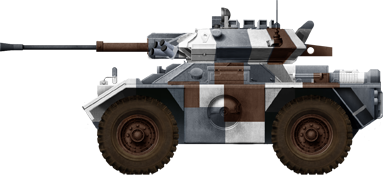
BAOR Berlin 1976
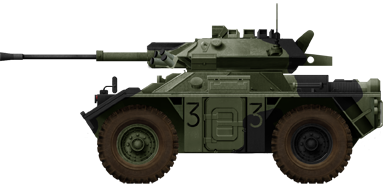
Camouflaged vehicle
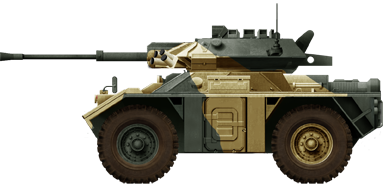
Camouflaged vehicle
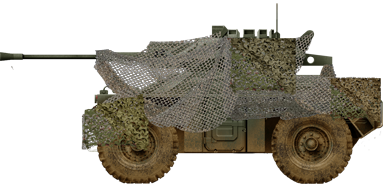
With a camouflage net
FV 721 Fox
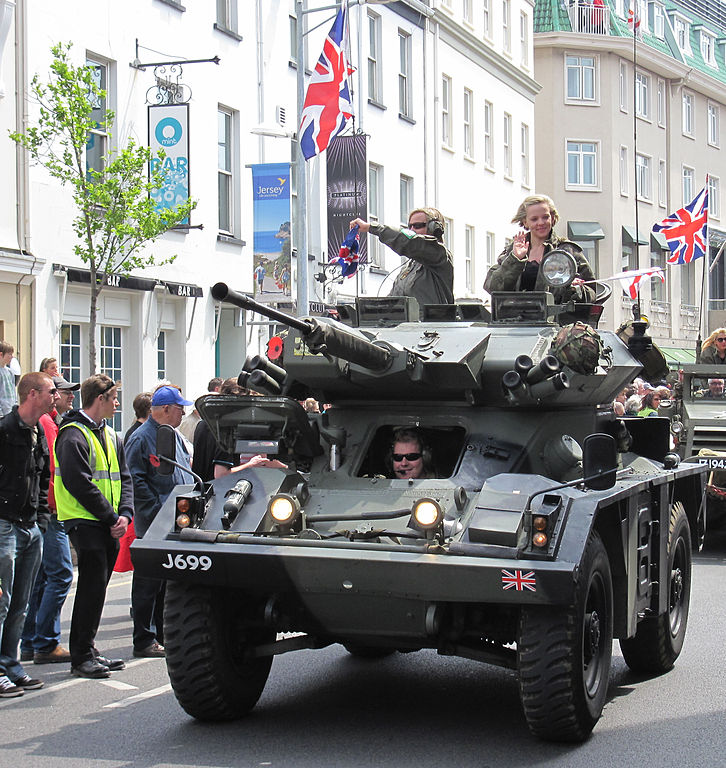
9 May 2010 Fox in Jersey
FV 721 Fox
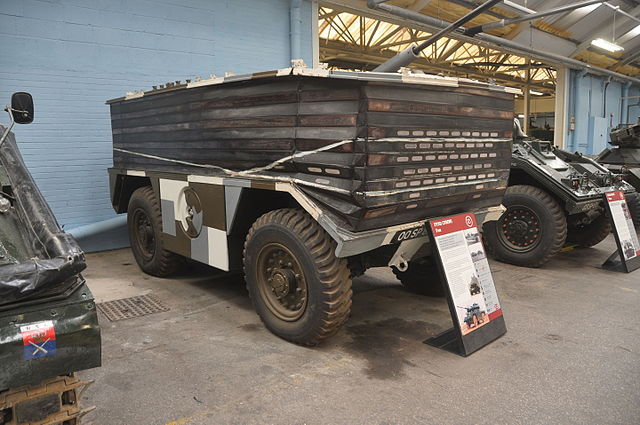
Fox of the BAOR, urban camo with screens at Bovington





Video
Part two here.
Cold War Tanks


































Cold war tanks posters

Cold War Main Battle Tanks

Cold War Soviet Army

